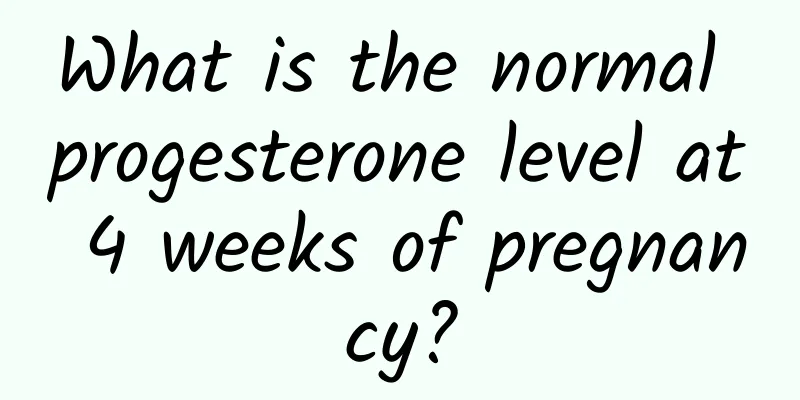What are the diagnostic tests for uterine fibroids?

|
Uterine fibroids are a common gynecological disease in women. They are a type of benign tumor that often has a serious impact on women's lives and work. Some uterine fibroids do not have any political manifestations, especially those with small fibroids or fibroids combined with pregnancy, which may lead to misdiagnosis during diagnosis. So what are the diagnostic tests for uterine fibroids? Let's ask relevant experts to introduce them in detail. What are the diagnostic tests for uterine fibroids? Diagnosis of uterine fibroids 1. Diagnostic curettage Small submucosal fibroids or dysfunctional uterine bleeding, endometrial polyps are not easy to detect with bimanual examination, and curettage can be used to assist in diagnosis. In the case of submucosal fibroids, the curette feels a convex surface in the uterine cavity, which rises high at first and then slides down, or feels something sliding in the uterine cavity. However, curettage can scrape the tumor surface and cause bleeding, infection, necrosis, and even sepsis. Strict aseptic operation should be performed, the action should be gentle, and the scraped material should be sent for pathological examination. If submucosal fibroids are suspected but the diagnosis and curettage are still unclear, hysterography can be used. Diagnosis of uterine fibroids 2. Hysterosalpingography An ideal hysterography can not only show the number and size of submucosal fibroids, but also their location. Therefore, it is very helpful for the early diagnosis of submucosal fibroids, and the method is simple. The hysterography at the site of fibroids shows that there is filling and incompleteness in the uterine cavity. Diagnosis of uterine fibroids 3. CT and MRI Generally, these two tests are not necessary. The images of CT diagnosis of fibroids only express the details within a specific layer, and the image structures do not overlap. The CT image of benign uterine tumors is an increase in volume, uniform structure, and density of +40 to +60H (normal uterus is +40 to +50H). When MRI diagnoses fibroids, different signals are displayed for the presence or absence of degeneration, type, and degree of degeneration inside the fibroids. The myonuclei are not degenerated or slightly degenerated, and the internal signals are mostly uniform. On the contrary, those with obvious degeneration show different signals. What are the diagnostic tests for uterine fibroids? After reading the above content, I believe you have understood it. If you have other questions, please consult our online experts, who will answer them in detail. Uterine fibroids topic: http://www..com.cn/fuke/zgjl/ |
<<: Don't let uterine fibroids get to you!
>>: Experts tell you the causes of uterine fibroids!
Recommend
The most important hazard of cervical hypertrophy
In life, there are many women who suffer from cer...
Experts explain how to effectively relieve dysmenorrhea
Women who suffer from dysmenorrhea will feel pain...
Does ovarian cyst require surgery?
Ovarian cyst surgery needs to be considered compr...
Love matcha but worried about the high calories? Homemade 3-course matcha light meal with zero burden!
In recent years, the matcha trend has risen in Ja...
Understand the obvious symptoms of female vulvar leukoplakia patients
Women are often prone to vulvar leukoplakia, whic...
Is bacterial vaginosis contagious?
Is bacterial vaginosis contagious? Bacterial vagi...
How does Gongjingyankang suppository treat cervical erosion? Methods of traditional Chinese medicine to treat cervical erosion
Cervical erosion is a common disease among women....
4 million people in Taiwan suffer from insomnia! Nutritionist Huang Weijie: 5 must-eat foods to help you get a good night's sleep
Are you also an insomniac? Long-term insomnia can...
There’s more to improving your immunity than just shuttlecock exercises! 4 exercises for bench press and squats to nourish muscles, high protein to increase physical strength
After being cooped up for a long time during the ...
What is natural biochemical pregnancy
Natural biochemical pregnancy refers to spontaneo...
Can I run if I have an enlarged cervix?
Patients with cervical hypertrophy can run modera...
What is the best way to eliminate uterine fibroids? Foods to eliminate uterine fibroids
What is a good way to eliminate uterine fibroids?...
What should not be eaten for vulvar leukoplakia
What should we not eat when we have vulvar leukop...
The symptoms of vulvar leukoplakia will let you know what to do!
The examination of vulvar leukoplakia is generall...
Threatened abortion hospital
When there is a problem with the body, we will be...









